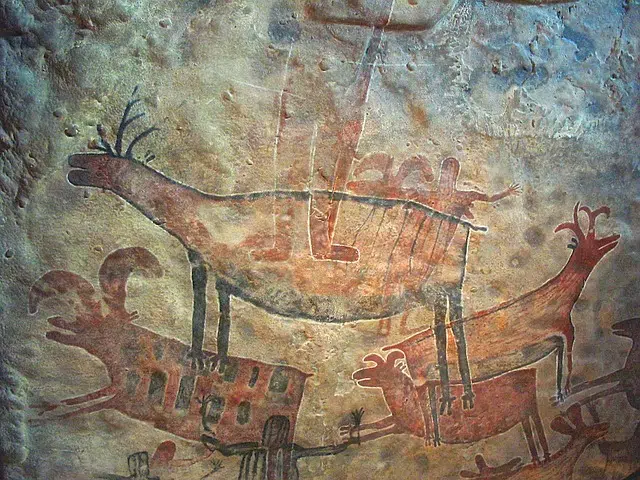
In the Paleolithic, humans coexisted with other species of the genus Homo.
The Paleolithic is a period in human history that began 2.85 million years ago and lasted until about 10,000 years ago. This is the initial stage of the so-called Stone Age , the era marked by the development and use of tools made with this material.
The three phases of the Paleolithic ( Upper Paleolithic , Middle Paleolithic and Lower Paleolithic ) represent the longest period in human history. The key to these millions of years lay in the improvement of stone tools and the development of utensils made with other components, such as wood and bones.
Species of the genus Homo
Homo sapiens (that is, the current human being ) is not the only member of the genus Homo who lived in the Paleolithic. Homo habilis , Homo erectus , Homo neanderthaliensis, and Homo floresiensis, among others, were also part of this extensive historical period in which people were nomadic.
Paleolithic man dedicated himself to gathering and hunting to satisfy his vital needs. In the first years of the period, the main method of subsistence consisted of collecting fruits, tubers and other foods. These prehistoric men also fed on already dead animals (they were scavengers). Already in the last stages of the Paleolithic, members of the Homo genus managed to perfect their skills and became more experienced hunters.

The Paleolithic was the scene of different types of artistic manifestations.
paleolithic art
It is said that art was born in the Upper Paleolithic with the creation of carved stones, engraved bones and cave paintings, among other manifestations. Unfortunately, we only know those that have lasted over time through material supports.
One of the points that stand out in Paleolithic art is the representation of man and woman. The male figure could have grotesque features and genitals designed with great attention to detail, but a poorly defined face; Likewise, in some examples animal features can be seen. The female figure (the Paleolithic Venus ), for her part, appears naked and shows prominent sexual attributes; Their faces may also be blurred and some of them represented fertility or beauty standards.
It is possible to distinguish between movable and parietal art, which are defined below:
Artistic manifestations that are transported
It is also called movable art and refers to works of art that can be transported and that have been found in different excavations. Among the objects belonging to this type of art are personal or domestic trousseau, such as bone, shell or stone pendants, and the symbolic value they may have had at the time is unknown. On the other hand, spearheads made of bone, harpoon tips and perforated staffs, which usually have engravings or drawings on their surface, also fall into this category.
Other objects seem to have been used exclusively in ceremonies, as is the case with the figurines called Paleolithic Venus , those of animals (as is the case of La Madeleine , a bison made of bone) and the engraved plaquelets, which probably played an important role in religious rituals.
Parietal art in the Paleolithic
The murals found in rock shelters, caves and caves belong to art called parietal (the term parietal refers to walls). The highest percentage of works of this type have been found in Western Europe; Most of them are found in the depths of caves, although there are also paintings in exterior sanctuaries, such as the La Viña shelter, in Oviedo, and the Laussel cave, in France.
Among the most recurrent themes of the engravings, reliefs and paintings that make up parietal art, ideomorphic signs , animals and human beings stand out.
